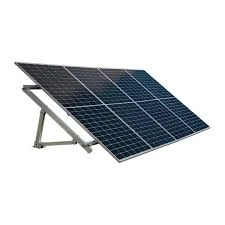Understanding the Efficiency and Benefits of Bifacial PV Technology in Solar Energy Systems
Understanding PV Bifacial Technology Efficiency and Applications
In recent years, the energy sector has witnessed significant advancements in photovoltaic (PV) technology, particularly in the area of bifacial solar panels. As the demand for sustainable energy sources continues to grow, bifacial panels offer an innovative solution to enhance efficiency and optimize energy production. This article delves into the concept of PV bifacial technology, its benefits, challenges, and its potential role in the future of renewable energy.
What Are Bifacial Solar Panels?
Bifacial solar panels are unique in that they can capture sunlight from both their front and rear sides. Traditional solar panels are typically monofacial, meaning they only convert sunlight hitting one surface into electricity. In contrast, bifacial panels can harness reflected sunlight (albedo) from the ground or nearby surfaces, significantly increasing their energy generation capacity.
The construction of bifacial panels often involves transparent or semi-transparent materials on the rear side, allowing sunlight to penetrate while maintaining the structural integrity of the panel. This design enables bifacial panels to absorb diffuse light and reflected light, which boosts their overall performance, particularly in environments with high albedo, such as snowy or sandy areas.
Benefits of Bifacial PV Technology
1. Increased Energy Yield One of the primary advantages of bifacial solar panels is their ability to generate more electricity compared to traditional panels. Research indicates that bifacial modules can produce 10% to 30% more energy, depending on the installation conditions. This translates into higher returns on investment for solar projects.
2. Reduced Land Use Given their higher efficiency, bifacial panels require less space to generate the same amount of electricity as traditional panels. This is particularly beneficial in areas where land availability is limited or costly. By maximizing energy output per square meter, bifacial technology can play a crucial role in urban solar energy solutions.
3. Durability and Longevity Bifacial panels are typically built with robust materials and have improved resistance to environmental factors such as moisture, dust, and temperature fluctuations. This durability often leads to longer lifespans, which is a significant advantage in terms of cost-effectiveness over time.
4. Versatility in Installation Bifacial panels can be installed in various configurations, including fixed tilt, tracking systems, and vertical installations. This flexibility makes them suitable for different geographic locations and deployment scenarios, from residential rooftops to large utility-scale solar farms.
pv bifacial

Challenges and Considerations
Despite their advantages, bifacial solar panels also come with challenges that need to be addressed for their widespread adoption
1. Initial Costs The upfront investment for bifacial technology can be higher due to the complexity of the panels and installation requirements. However, the long-term energy savings often justify the initial expenditure.
2. Installation and Design Proper installation is critical to maximizing the benefits of bifacial modules. Factors such as the tilt angle, height, and layout can significantly impact their efficiency. Therefore, it is essential for developers to have a solid understanding of the site-specific conditions to optimize energy generation.
3. Performance Monitoring Continuous monitoring of bifacial panel performance is essential to ensure they operate at optimal efficiency. Advanced monitoring systems may need to be deployed to track output from both surfaces and adjust for environmental variables, which can add to installation complexity.
4. Market Adoption While bifacial technology is gaining traction, market acceptance may vary across regions. Regulatory frameworks and incentives can play a crucial role in promoting bifacial installations and encouraging investment in research and development.
The Future of Bifacial PV Technology
As global efforts to combat climate change intensify, bifacial solar panels stand at the forefront of solar technology breakthroughs. Growing interest from manufacturers, investors, and policymakers suggests a promising future for this innovative technology. Enhanced efficiency, coupled with declining costs of solar components, paints a bright picture for bifacial PV systems.
In conclusion, PV bifacial technology presents a compelling opportunity for increasing solar energy production and efficiency. By harnessing both direct and reflected sunlight, bifacial panels have the potential to become a key player in the renewable energy landscape. As challenges are addressed and technological innovations continue, the future of bifacial solar panels looks encouraging, setting the stage for a more sustainable energy world.
-
Understanding the Advantages of Solar String Inverters for Your Energy SystemNewsApr.29,2025
-
Choosing the Right PV Inverter: A Comprehensive GuideNewsApr.29,2025
-
The Future of Solar Power: Exploring Bifacial Solar PanelsNewsApr.29,2025
-
The Complete Guide to Solar Panels: Efficiency, Cost, And InstallationNewsApr.29,2025
-
The Best Options for Efficiency and Cost-EffectivenessNewsApr.29,2025
-
Harnessing the Power of Off-Grid Solar Inverters for Energy IndependenceNewsApr.29,2025







